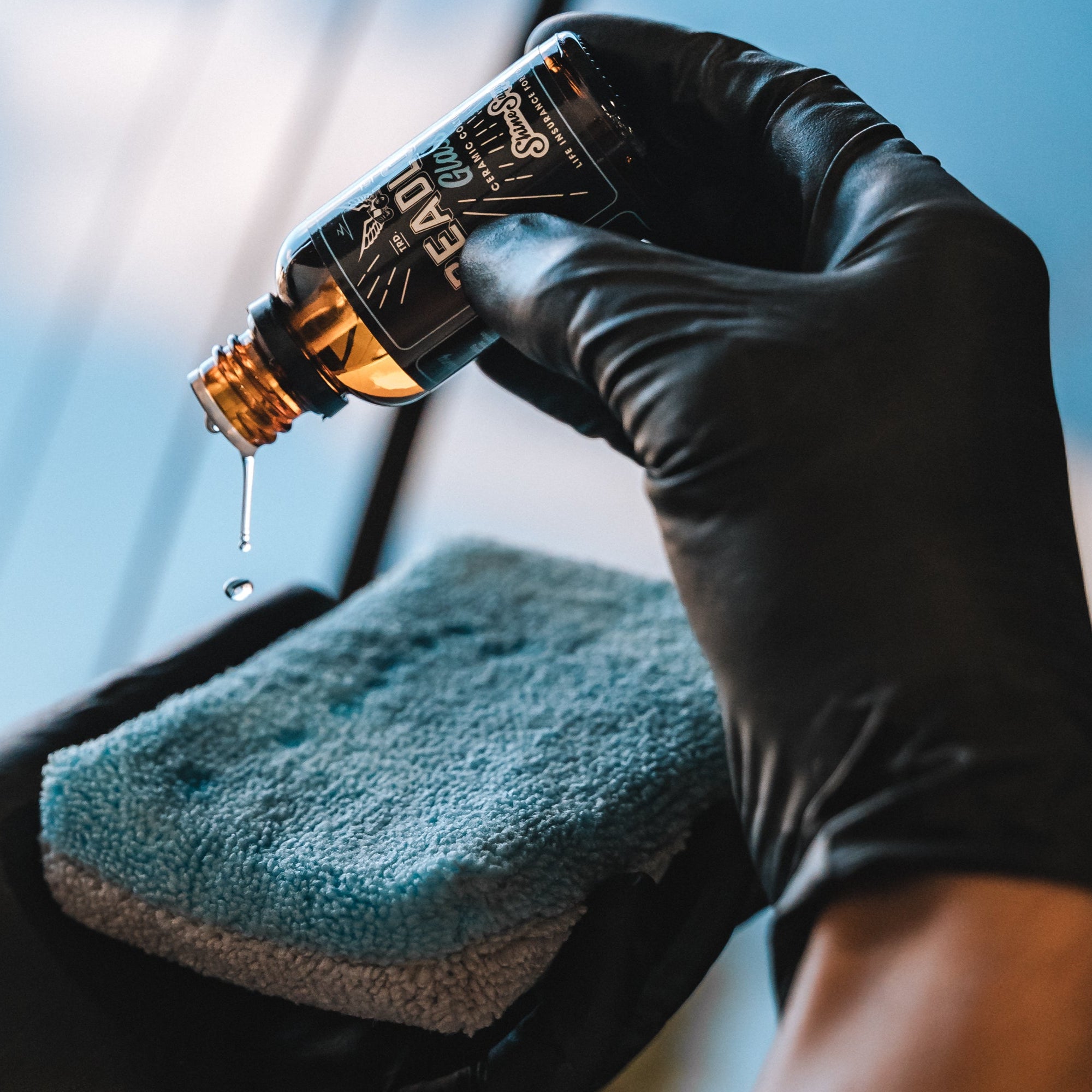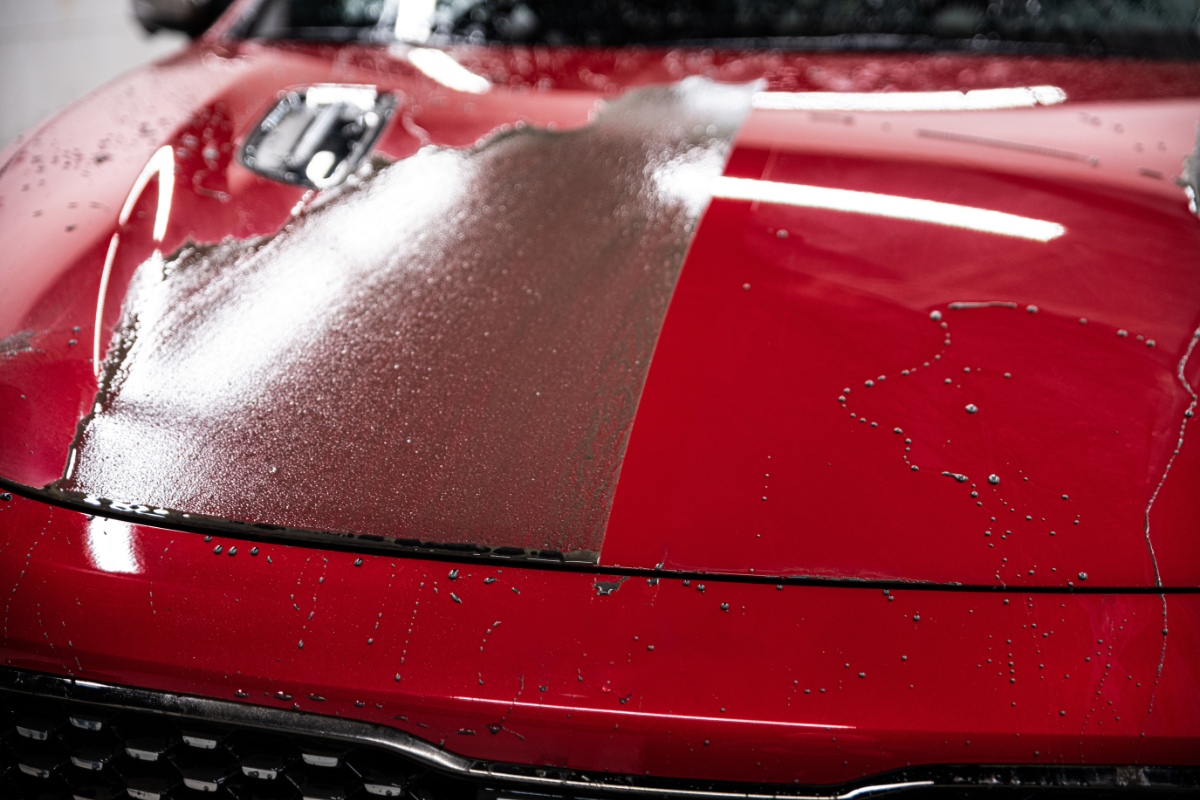Choose reliable ceramic coating Sarasota for a shiny finish.
Choose reliable ceramic coating Sarasota for a shiny finish.
Blog Article
A Comprehensive Guide to the Types of Ceramic Finish on the Market
Ceramic finishings have arised as a crucial remedy across various markets as a result of their special homes and applications. From silica-based formulas recognized for their effectiveness to crossbreed options that combine multiple advantages, the selections available can be overwhelming. Recognizing the subtleties of each type, including their specific benefits and ideal use instances, is crucial for making informed choices. As we explore the unique characteristics and applications of these coatings, the implications for efficiency and longevity end up being increasingly evident, questioning concerning which kind could ideal fit your demands.
Understanding Ceramic Coatings
Ceramic coatings are innovative safety options that have gained appeal in different markets, specifically in auto and aerospace applications. These coatings include a liquid polymer that, when treated, develops a long lasting, hydrophobic layer externally of the substratum. This layer offers boosted resistance to environmental contaminants, UV radiation, and chemical exposure, therefore expanding the life and aesthetic appeal of the underlying product.
The basic element of ceramic layers is silica, which adds to their firmness and longevity. The application procedure typically entails surface area preparation, application of the finishing, and treating, which can be achieved with warmth or UV light. As soon as healed, ceramic layers exhibit phenomenal bonding residential properties, allowing them to stick strongly to a variety of surface areas, including metals, plastics, and glass.
Along with their safety attributes, ceramic coverings also supply convenience of upkeep. Their hydrophobic nature decreases the adherence of dirt and gunk, making cleaning easier and much less frequent. Generally, the adoption of ceramic coverings stands for a considerable advancement in surface defense innovation, giving both functional and visual advantages across several sectors.
Sorts Of Ceramic Coatings
Numerous types of ceramic finishes are readily available, each developed to fulfill specific performance needs and applications - Auto Detailing. The most usual types consist of:
Silica-based Coatings: These coatings mostly contain silicon dioxide and are recognized for their sturdiness and chemical resistance. They are extensively made use of in automotive and industrial applications.
Titanium Dioxide Coatings: Distinguished for their photocatalytic properties, titanium dioxide coverings are typically used in settings where self-cleaning and antifungal buildings are preferable, such as in structure materials and automotive coatings.
Zirconia Coatings: Identified by their high-temperature security and thermal resistance, zirconia layers are made use of in applications such as generator engines and high-performance auto parts.
Alumina Coatings: Showing superb solidity and thermal security, alumina layers are often utilized in wear-resistant applications, consisting of reducing tools and commercial equipment. - ceramic coating sarasota
Crossbreed Coatings: Integrating the residential or commercial properties of numerous products, hybrid finishings offer enhanced efficiency qualities, making them suitable for distinct and demanding applications.
Each sort of ceramic coating offers distinct objectives, allowing users to choose the most suitable option based on details environmental conditions and performance needs.
Advantages of Ceramic Coatings
Coatings play a vital role in boosting the performance and long life of surfaces across various markets. Ceramic layers, specifically, deal you can check here various benefits that make them significantly preferred amongst makers and customers alike. One of the main benefits is their phenomenal toughness. These coatings are resistant to scrapes, chemicals, and UV rays, guaranteeing that the underlying surface area remains secured with time.
Along with durability, ceramic layers provide exceptional hydrophobic residential or commercial properties, enabling very easy cleaning and maintenance. This water-repellent nature lessens the adherence of dust, grime, and other impurities, which can lengthen the aesthetic allure and functionality of the surface. Furthermore, ceramic finishes can considerably boost thermal resistance, making them perfect for applications that sustain high temperatures.

Application Process
When applying ceramic layers, a precise strategy is visit this website important to achieve ideal results. The application process commonly starts with comprehensive surface area preparation. This entails cleaning, sanitizing, and polishing the surface to get rid of all pollutants, consisting of dirt, oil, and prior waxes or sealants. A clean surface area makes certain correct adhesion of the covering.
When the surface area is prepped, the next action is to use the ceramic layer. This can be done utilizing an applicator pad or a microfiber towel, making sure even coverage. It is critical to work in little areas to maintain control and stop premature healing. The finishing ought to be applied in slim layers, as thicker applications can cause unequal finishes.
After application, the coating needs a particular why not look here curing time, typically ranging from a couple of hours to a complete day, depending on the product. Complying with these actions diligently will make the most of the effectiveness and durability of the ceramic finishing, offering a sturdy safety layer for the surface.
Upkeep and Durability
To make certain the long life and performance of a ceramic covering, routine upkeep is important. Ceramic finishings, recognized for their resilience and safety top qualities, require specific treatment regimens to maximize their life expectancy and efficiency.
Along with normal washing, routine inspections are crucial. Seek indications of wear or damage, such as hydrophobic residential or commercial properties lessening or surface area blemishes. If needed, a light polish may be related to revitalize the layer without stripping it away.
In addition, the application of a booster spray can enhance the layer's hydrophobic effects and recover its gloss. This is specifically beneficial for coverings that have been in use for an extended period. Ultimately, by adhering to these maintenance practices, one can considerably prolong the life of a ceramic layer, making certain that it continues to give optimum protection versus ecological aspects and preserve the visual charm of the vehicle.
Conclusion

Report this page